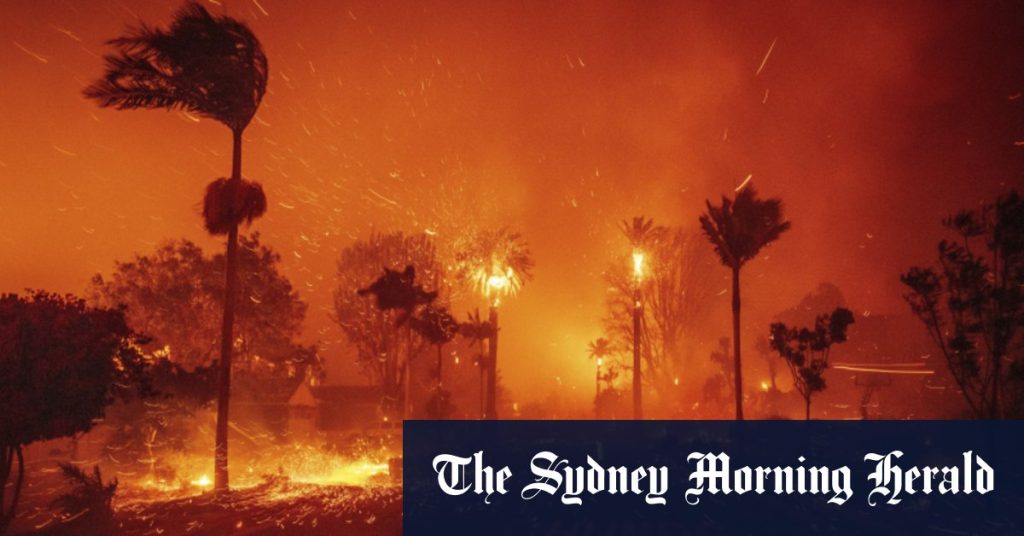The intensification of hydroclimate whiplash, characterized by dramatic swings between extreme rainfall and severe drought, is a growing global concern driven by climate change. This phenomenon arises from the “expanding atmospheric sponge” effect, where a warmer atmosphere holds more moisture. For every degree Celsius of warming, the atmosphere’s capacity to hold water increases by approximately 7%, leading to more intense downpours. This deluge of rain fuels rapid vegetation growth, which, when followed by dry periods, creates vast quantities of highly flammable fuel, priming landscapes for devastating fires. This volatility in rainfall patterns, marked by more extreme wet and dry periods, has increased significantly, with studies showing a 31% to 66% global increase attributed to human-induced climate change. The effect is particularly pronounced in regions like America, Europe, and Australia. Alarmingly, this atmospheric sponge expands exponentially, meaning that each incremental increase in warming leads to a disproportionately larger increase in the atmosphere’s water-holding capacity, accelerating the cycle of intense rain and drought.
This climate whiplash presents a compelling explanation for the increasingly rapid onset and severity of climate impacts observed in recent years. The cycle was starkly illustrated in Queensland, Australia, in 2023, where a devastating fire in October was followed just a month later by record-breaking rainfall. Similar scenarios are playing out globally, with the unprecedented fires in Los Angeles serving as a stark reminder of the escalating urban fire risk. The devastation in LA, typically considered a safe urban environment, underscores the shifting paradigm of fire behavior and the vulnerability of even well-developed urban areas to catastrophic fire events. The destruction of familiar urban landscapes, even those deemed aesthetically mundane, carries a profound psychological impact, highlighting the disruptive power of these “outside the bounds of normality” events. The sheer scale of the LA fires, impacting even the affluent and famous, elevates this event to a potentially “history-defining” moment.
The changing dynamics of fire behavior are further exacerbating the problem. Fires are now burning more intensely at night, depriving firefighters of crucial rest periods previously afforded by cooler temperatures and higher humidity. The increased occurrence of pyrocumulonimbus clouds, massive fire-induced thunderstorms, further intensifies fire spread and generates extreme weather conditions. Perhaps most alarmingly, the speed of fire propagation has increased dramatically. The rapid doubling time of the LA fires, a clear indicator of climate change’s influence, makes traditional firefighting strategies, such as aerial bombardment with water, increasingly ineffective.
The evolving fire landscape necessitates a paradigm shift in urban fire risk management. Experts advocate for a multifaceted approach, emphasizing biodiversity-friendly firebreaks, incorporating Indigenous knowledge through cultural burning practices, and strategically managing vegetation overgrowth. Retrofitting older homes to improve fire resistance and exploring innovative biological controls, like using herbivores such as goats and kangaroos to manage vegetation growth, are among the proposed strategies. Creating a mosaic of fire-resistant landscapes, blending both practical and aesthetically pleasing solutions, is key to mitigating future risk.
The LA fires have also exposed the critical need for designated safe evacuation zones within urban areas, not just in the surrounding bushland. As the footprint of fires expands deeper into suburban areas due to climate change, the vulnerability of homes becomes increasingly apparent. Factors like dry gardens, accumulated flammable materials on verandas, and older homes with dry debris in roofs significantly increase the risk of ignition and rapid fire spread. The lack of comprehensive understanding of urban fire dynamics underscores the urgency of ongoing research.
Current research is working to fill critical knowledge gaps in urban fire behavior. Studies using wind tunnels are revealing important insights into how fires spread in densely populated areas, where houses are often much closer together than traditional fire safety models assume. This research aims to improve building regulations and provide homeowners with more effective fire safety advice. Surprisingly, research also shows that fires racing downhill, as witnessed in LA, can expose structures to up to 30% more radiative heat, a factor previously not fully appreciated.
The LA disaster serves as a stark warning, emphasizing the choice between reactive and proactive approaches to fire management. Ignoring the lessons learned from such events carries significant risks. The escalating severity and lethality of fires, as evidenced by the Camp Fire in California in 2018 and the devastating fires in Hawaii in 2023, underscore the growing global threat. These events, previously considered unlikely in tropical climates like Hawaii’s, highlight the changing nature of wildfire and the expanding reach of its devastating impact.
Experts warn that Australia, too, faces an escalating threat of fire encroaching on urban areas as the climate continues to warm and dry. The grim prognosis is that without significant action to address climate change, nature will increasingly utilize fire to transform landscapes, converting forests to scrub, scrub to grassland, and grassland to desert. The prevailing view among many fire experts is that simply throwing more resources or relying on technological solutions is no longer sufficient to combat the increasing intensity and frequency of these fires. The situation demands a fundamental shift away from reactive firefighting strategies and toward preventative measures focused on mitigating climate change. The increasing frequency of “catastrophic” fire danger ratings, a classification introduced only in 2009, signifies the limitations of conventional firefighting methods and underscores the urgency of addressing the underlying climate drivers of this growing crisis.










